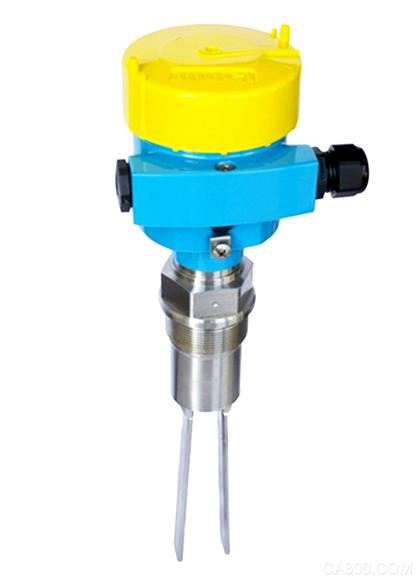Tuning fork level switches are widely used in industries such as petrochemical, metallurgy, light industry, construction materials, and environmental protection for liquid level alarm and control. These devices operate by vibrating a tuning fork at a specific resonant frequency using piezoelectric crystals mounted on the base of the fork. When the fork comes into contact with the measured medium, its vibration frequency and amplitude change. These changes are detected and processed by an intelligent circuit, which converts them into switching signals to trigger alarms or control actions.
We know that the vibration frequency of a tuning fork can be calculated using the following formula:
$$ f = \frac{1}{2\pi} \sqrt{\frac{E}{\rho}} \cdot \frac{1}{L} \cdot t $$
Where:
- $ t $: Thickness of the fork (in meters)
- $ L $: Length of the fork (in meters)
- $ E $: Young's modulus (in kgf/m²)
- $ \rho $: Density of the fork material (kg/m³)
- $ g $: Acceleration due to gravity (980 cm/s²)
From this formula, it’s clear that adjusting the nominal frequency of the tuning fork can be achieved by modifying its thickness, length, or material. The vibration frequency is inversely proportional to the square of the fork’s length — the longer the fork, the lower the frequency. It is directly proportional to the thickness — the thinner the fork, the lower the frequency.
In typical working environments, random vibration frequencies range from 0 to 800 Hz. If the tuning fork’s frequency falls within this range, resonance may occur, leading to interference and unreliable measurements.
Currently, many manufacturers produce tuning fork level switches that can measure both liquids and solids. However, these dual-purpose models often sacrifice some media density sensitivity. As a result, their liquid level switch frequencies are typically set between 600–800 Hz, which limits their application range, adaptability, and reliability, especially in special conditions.
Here is a comparison table showing the minimum detectable density of various tuning fork level switches:

The Ring-11 tuning fork level switch, developed by Shenzhen Jiwei Automation Technology Co., Ltd., is specifically designed for liquid level measurement. Based on the principle of detecting changes in vibration frequency when the fork is immersed in the medium, this model operates around 1200 Hz. It is suitable not only for standard tank level monitoring but also for complex scenarios involving bubbles, viscous liquids, and vibrations. It can detect liquids as low as 0.5 g/cm³, ensuring stable and reliable performance in a wide range of operating conditions.

Additionally, Shenzhen Jiwei has also developed a tuning fork level switch tailored for solid material level detection. This model detects changes in vibration amplitude when the fork contacts the solid material. With a minimum measurable density of up to 0.008 g/cm³, it is ideal for ultra-low density applications. Its high adaptability and reliability make it comparable to top international brands.
By addressing the limitations of traditional tuning fork level switches, the Fork-11 series offers superior performance and stability. We hope this information helps you choose a more reliable and accurate level detection solution.
For more information about level switches, magnetic level gauges, and other measuring instruments, follow our WeChat official account: Jiweimeter. (This article is sourced from [source], please cite the source.)
Dual Axis Solar Tracker System
Dual Axis Solar Tracker System,Sun Power Single Axis Solar Tracker,Dual Axis Solar Sun Tracker pv tracker,Pv Solar Tracking System
Hebei Jinbiao Construction Materials Tech Corp., Ltd. , https://www.pvcarportsystem.com